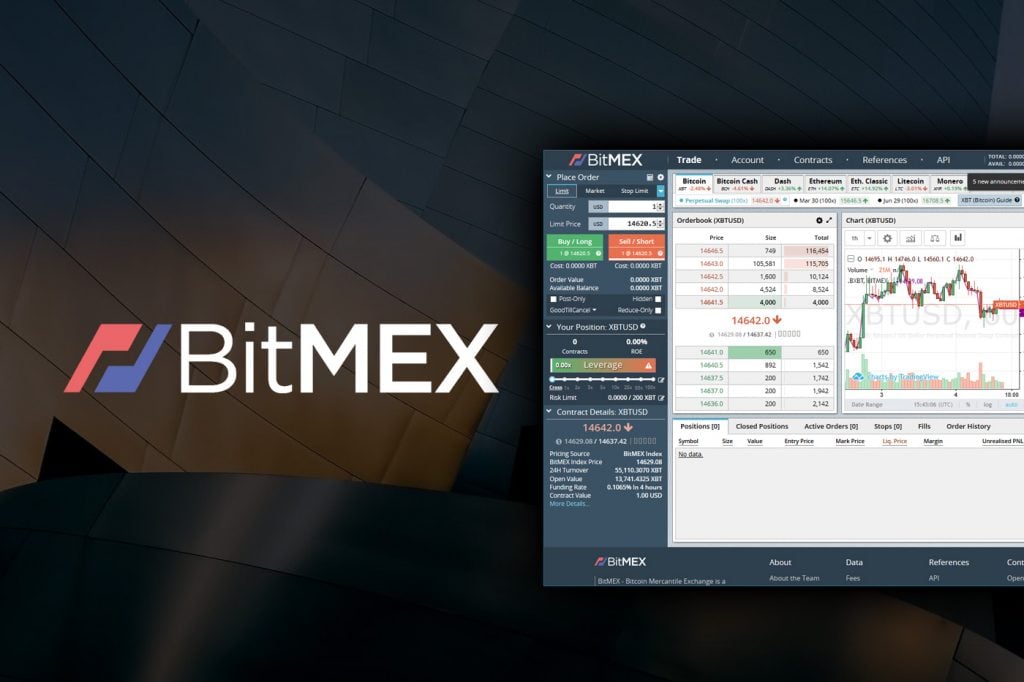Crypto Derivatives & The Looming Shadow of Institutional Investment
Narratives come and go quickly in the crypto space, with some progressing towards tangible products and developments while others fall by the waist side. The impending entrance of institutions into crypto has been speculated on for more than a year, with few definitive signs that major institutions have fully taken the plunge yet.
Despite indications such as Grayscale’s record $2.8 billion assets under management (AUM) for Q2, Bakkt futures in testing, and Fidelity expected to roll out their crypto platform in the coming months; the general consensus is — once institutions really dive into crypto, it will be obvious.
Institutional speculations also come amidst an uncertain global economic backdrop, with tensions flaring in the US-Chinese trade war sparking an all-time low for the Chinese Yuan, governments around the world on the verge of expanding quantitative easing, and negative bond yields emerging in Europe all indicative of a tenuous situation.

Add in the 6-year high of gold prices, and it is clear money is flowing into the traditional safe-haven asset for a well-known reason.
Despite the ongoings of the conventional financial world, cryptocurrencies are unfolding in a unique environment. However, although considered to be independent of legacy finance, the correlation fueling the rising narrative that Bitcoin is a safe-haven asset like gold is a mixed bag right now.
Coin Metrics’ “State of the Network” newsletter has recently provided some useful information into the potential link between Bitcoin and global finance, and the connection is worth watching as crypto markets mature and uncertainty lingers in conventional ones.
As investors wait for an “alt season” that seems like it won’t arrive anytime soon, Bitcoin and some of the other leading altcoins (e.g., Ethereum) are showing positive market signs. Their recent rise has been coupled with an increasingly competitive field for crypto derivatives products.
All of the above sets a fascinating background for a budding trend in cryptocurrency markets, and its potential impact on institutional entrance into the markets.
The Dominance of BitMEX and Pitfalls of US Regulation
What’s interesting about the recent rise of crypto derivatives products, primarily in Asia, is that they are rapidly gaining traction among retail investors, prop shops, and (maybe) institutions dipping their toes into the pool.
It’s hard to tell when BitMEX, the current flag-bearer for the crypto derivatives scene, refreshingly does not force KYC/AML on its users — fostering a unique pseudonymous exchange experience.
However, BitMEX’s popularity, it’s massive insurance fund, high leverage, and lack of compliance has unfortunately attracted the attention of the CFTC, who is reportedly probing the exchange for servicing US customers.
In doing so, the CFTC has shed a spotlight on the microcosm that BitMEX’s represents for the emergence of crypto derivates products — the pitfalls and fallout of uncertain US regulations.
It’s no secret that US regulators have tarried behind Asia, and many other countries, concerning definitive cryptocurrency regulations. As a result, some major exchanges that geo-block US customers include BitMEX, Deribit, Bitfinex, and Binance. In order, those are two of the most popular crypto derivatives platform in the world, and two of the leading spot exchanges (i.e., Bitfinex & Binance), who happen to be rolling out margin and derivatives products of their own.

Read: Our Review of BitMex
American users cite easy ways to circumvent geo-blocking, but holding digital cryptocurrencies on a foreign exchange whose policy is not to serve US customers is a precarious position.
Besides the CFTC probing BitMEX, the NYAG is also engaged in a lawsuit with Bitfinex over serving New York customers, which Bitfinex denies, and is moving forward with their high-leverage Bitcoin swap analogs anyways.
BitMEX, despite the pitfalls with its trading engine, is a vital exchange in the Bitcoin markets and has been for quite some time. Just recently, the exchange exceeded $1 trillion in annual volume. But success comes with the scrutiny of regulators, even if they are based in the US.
The inclination of US agencies to pursue foreign exchanges is more than enough to deter low-barrier entry, high leverage swap products from emerging in the US, even if ErisX, Bakkt, and LedgerX are rolling out compliant, physically-delivered Bitcoin futures.
As a result, it’s no surprise that a hotbed of crypto exchange innovation has occurred across the Pacific from the US.
From Huobi Global to OKEx to Deribit, the Asian field of competition is seeking to steal some market share from BitMEX, who saw record outflows of BTC in July following the announcement of CFTC probe.
A New Wave of Competition
With Bitfinex and Binance derivatives and margin products on the horizon, the current field of crypto derivatives platform is about to get tighter. A few major exchanges have dominated the derivatives landscape so far, but it appears that established exchanges cannot avoid the lure of appealing to more investors with more crypto products, particularly with the impending entrance of institutions.
According to FTX’s global volume monitor, the top 5 crypto derivatives exchanges by volume are:
- BitMEX
- OKEx
- Huobi Global
- bitFlyer
- Deribit
All of the platforms are based outside the US, and BitMEX, OKEx, bitFlyer, and Huobi Global have operations in Asia, even if they are incorporated in obscure locales, like Seychelles for BitMEX. For their part, Deribit is run from Amsterdam in the Netherlands. Huobi is the US-arm of Huobi Global based in San Francisco, but does not offer derivatives products to US customers and is only a spot exchange. BitFlyer also has a similar option for US customers.
FTX is another emerging derivatives exchange themselves, born from quant trading firm Alameda Research, which is a resident on BitMEX’s leaderboard and currently manages over $100 million in digital assets. FTX, incorporated in Antigua and Barbuda, has burst onto the scene following the launch of their exchange platform with a refined liquidation engine, and interesting product offerings like a “shitcoin index” basket of low cap altcoins.

Read: Our Review of Deribit
FTX currently sits at 7th in derivatives volume, behind the Chicago Mercantile Exchange (CME) in the US, which is sixth and has cash-settled futures — not physically-delivered.
Overall, you can find similar, albeit slightly varied, takes on BitMEX’s famous perpetual swap on crypto derivatives exchanges, among other options and futures as well. Leverage offered is high, often up to 100x, and some exchanges grant USDT as collateral alongside BTC and even swaps/futures for altcoin pairs.
As far as compliance goes, it’s no secret that BitMEX is popular for its pseudonymous approach to user identities. In an industry that runs contrary to centralized data repositories and its many pitfalls (i.e., Binance’s KYC extortion quandary), the nature of BitMEX likely contributes to its gravity among many traders.
Additionally, many traders are attracted to the high leverage of BitMEX, Deribit, OKEX, and FTX, which offer up to 100X leverage on Bitcoin futures/swaps. However, that high of leverage also brings enormous risk, and is not recommended for retail traders.
Huobi Global and bitFlyer also offer leverage, but in smaller sizes than their high-leverage counterparts. For example, Huobi Global DM (their derivatives market) offers up to 20X on BTC futures, and bitFlyer offers 15X.
Conclusion
We are still only very early into the crypto derivatives market, as overall volumes of roughly $14 billion (at the time of writing) across all crypto derivatives exchanges pales in comparison to conventional derivatives markets.
Add in the shadowy history pervading crypto exchanges, stemming from countless hacks, and institutions are right to hesitate on diving into crypto derivatives.
However, as the market matures, look for more derivatives products, and exchanges offering them, to emerge. Should institutions take significant interest in Bitcoin derivatives once they are live and rolling with the likes of Bakkt, ErisX, and LedgerX, expect the actualization of the institutional entrance into crypto markets — fulfilling the long-awaited narrative.
The onset and proliferation of crypto derivatives offerings appear here to stay, and is set amongst an uncertain economic background, struggling altcoin prices, and a potentially pivotal moment in Bitcoin’s history as a store of value. And Asia is looking to take the lead.


eToro Risk Warning: 66% of retail investor accounts lose money when trading CFDs with this provider. You should consider whether you can afford to take the high risk of losing your money.
You have Successfully Subscribed!
Source: blockonomi.com
View original post




